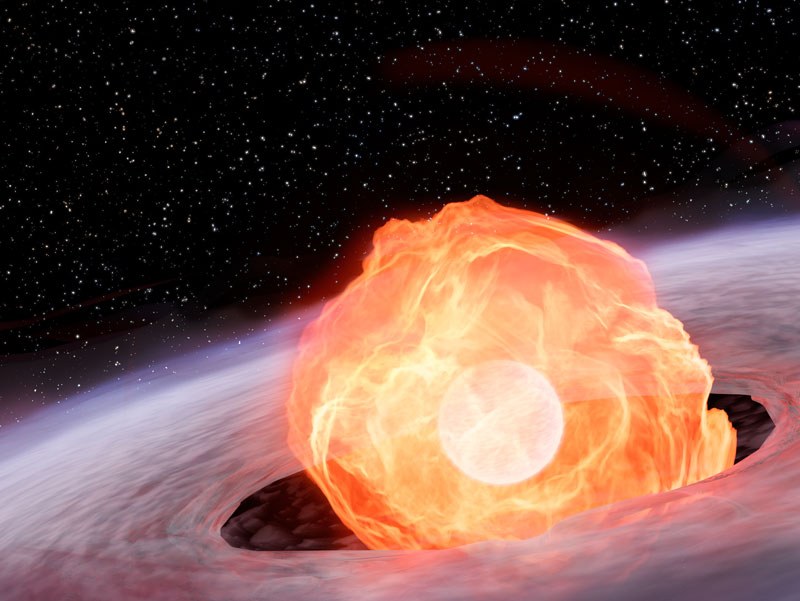The e-ROSITA X-ray observatory detects for the first time the 'fireball' of a stellar explosion
May 16, 2022
A research team led by the Friedrich-Alexander-Universität Erlangen-Nürnberg (FAU) and of which Glòria Sala, a researcher at the UPC Astronomy and Astrophysics Group and the Institute for Space Studies of Catalonia (IEEC), is a member, has been able to observe, for the first time, an explosion of X-ray light. The study is featured on the cover of the journal Nature.
The study, which was published on the cover of the journal Nature on May 11, is led by the Friedrich-Alexander-Universität Erlangen-Nürnberg (FAU) and has the participation of the Max Planck Institute for Extraterrestrial Physics (MPE), the University of Tübingen and the Leibniz Institute for Astrophysics Potsdam. Participating on behalf of the Polytechnic University of Catalonia BarcelonaTech (UPC), is Glòria Sala, a researcher in the Astronomy and Astrophysics Group of the UPC Department of Physics and the Institute for Space Studies of Catalonia (IEEC), and a professor at the School of Engineering of Barcelona East (EEBE) of the University. For more information, you can visit the UPC news website
The new ones are unpredictable stellar explosions that apparently appear as a "new" star in the sky. The origin of this phenomenon lies in the accumulation of material from a star similar in size to the Sun (such as hydrogen from the outer layers) on a companion white dwarf star, a type of highly compact star, which has a mass similar to that of the Sun but concentrated in a celestial body with a radius equivalent to that of the Earth.
The study of the explosions again allows us to put together some of the pieces of the chemical evolution of the Galaxy and how the variety and distribution of chemical elements present in the Solar System have come to be, after the Big Bang, starting an initial universe. with a much simpler composition. Observation from large ground-based telescopes, together with the study of X-ray and gamma-ray emissions from satellites and theoretical modeling through numerical models, allow us to reconstruct the detailed processes that occur in these explosive phenomena and their contribution to the evolution of the Galaxy.
For this reason, the detection of the initial 'fireball' predicted by the models is a key piece to check and adjust the theories of stellar explosions again.

Share: